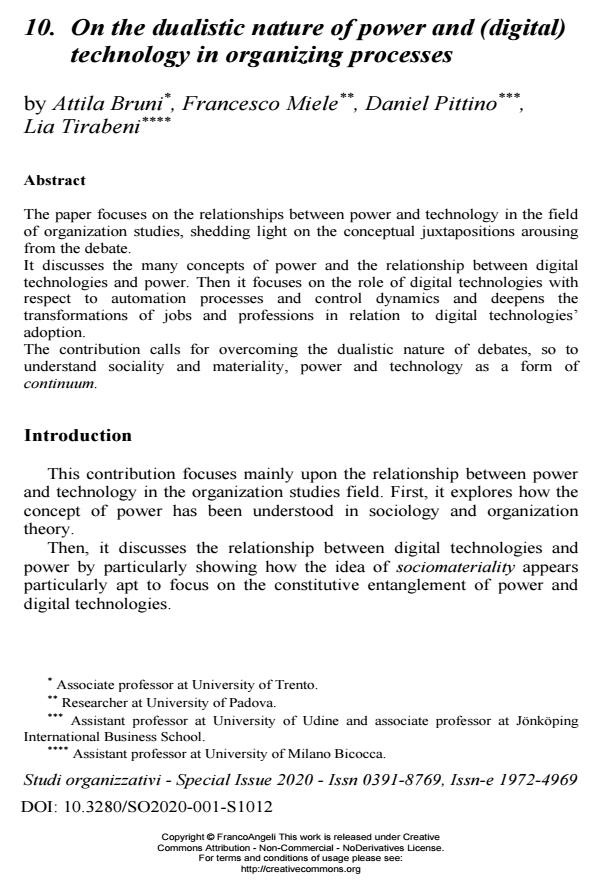On the dualistic nature of power and (digital) technology in organizing processes
Journal title STUDI ORGANIZZATIVI
Author/s Attila Bruni, Francesco Miele, Daniel Pittino, Lia Tirabeni
Publishing Year 2020 Issue 2020/suppl. 1
Language English Pages 13 P. 207-219 File size 213 KB
DOI 10.3280/SO2020-001-S1012
DOI is like a bar code for intellectual property: to have more infomation
click here

FrancoAngeli is member of Publishers International Linking Association, Inc (PILA), a not-for-profit association which run the CrossRef service enabling links to and from online scholarly content.
The paper focuses on the relationships between power and technology in the field of organization studies, shedding light on the conceptual juxtapositions arousing from the debate. It discusses the many concepts of power and the relationship between digital technologies and power. Then it focuses on the role of digital technologies with respect to automation processes and control dynamics and deepens the transformations of jobs and professions in relation to digital technologies’ adoption. The contribution calls for overcoming the dualistic nature of debates, so to understand sociality and materiality, power and technology as a form of continuum.
- Reintroducing technology to the coworking debate: prospects and problematics Maddalena Sorrentino, Lia Tirabeni, Maria Laura Toraldo, in STUDI ORGANIZZATIVI 2/2023 pp.70
DOI: 10.3280/SO2022-002003
Attila Bruni, Francesco Miele, Daniel Pittino, Lia Tirabeni, On the dualistic nature of power and (digital) technology in organizing processes in "STUDI ORGANIZZATIVI " suppl. 1/2020, pp 207-219, DOI: 10.3280/SO2020-001-S1012